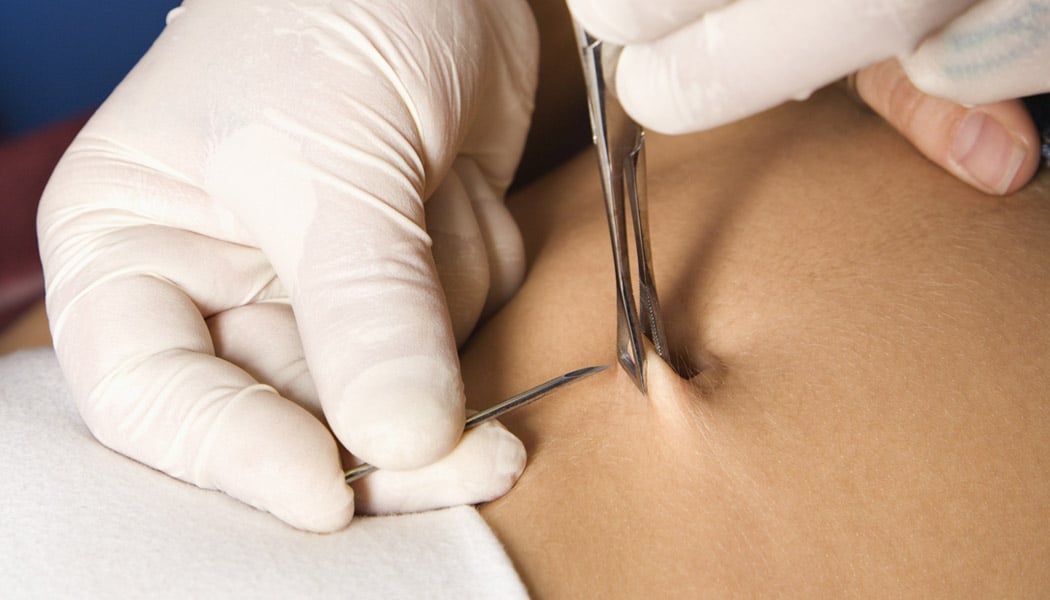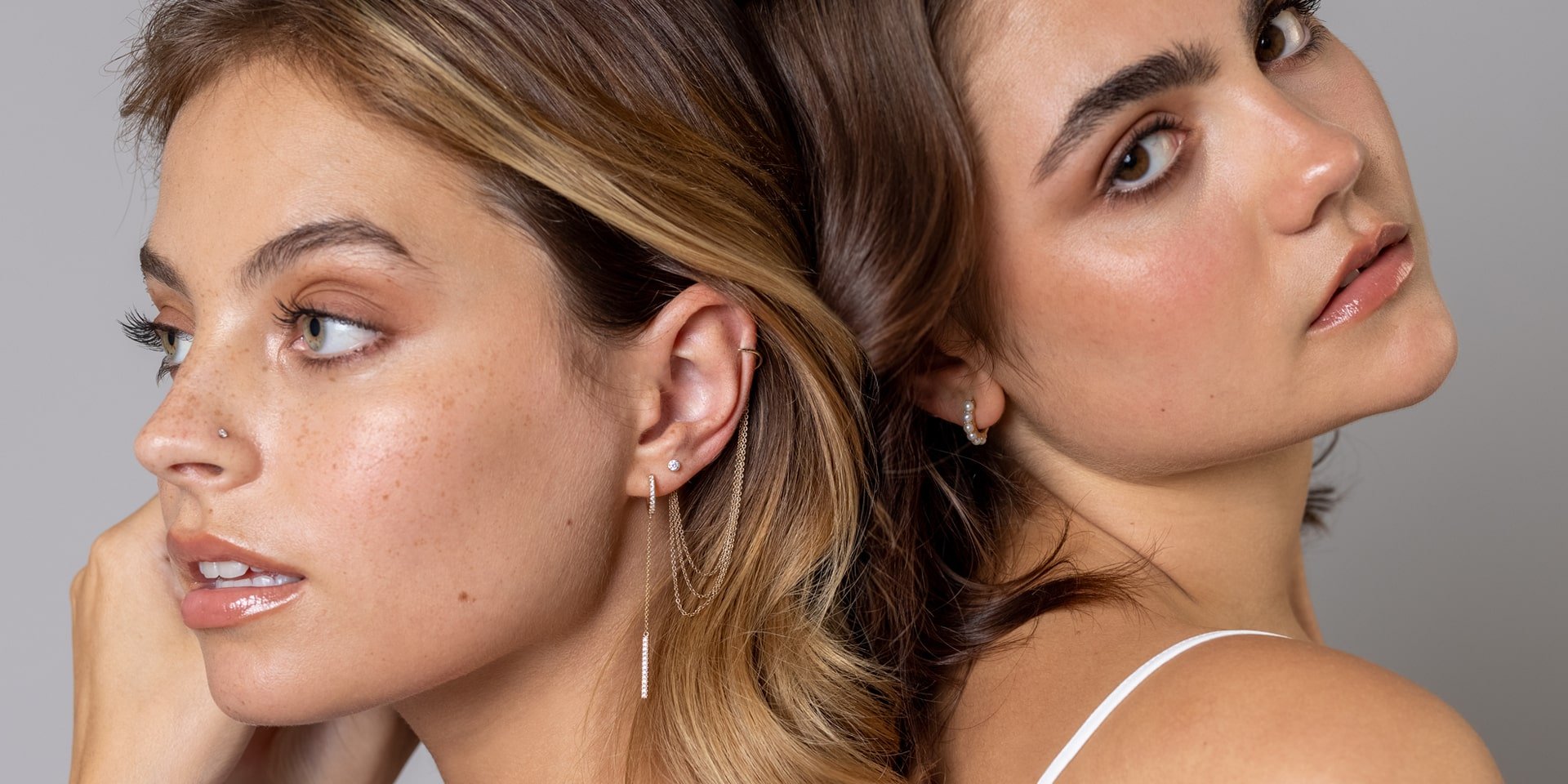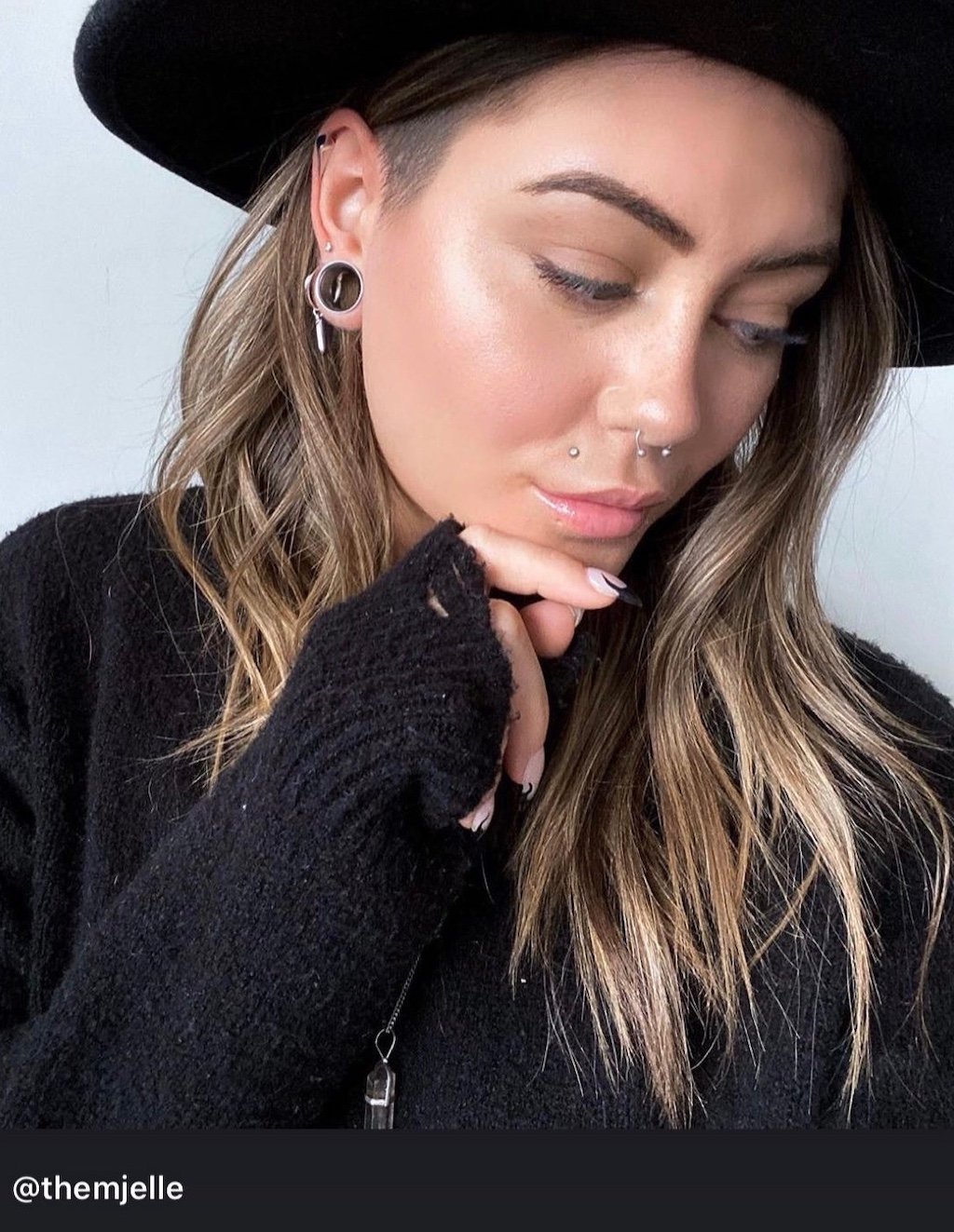
There are some who get pierced who love the pain of a piercing. There’s something addictive about the feeling of a needle pushing through your skin that brings these people back time and time again.
On the other hand, there are some of us who need to take a moment to wallow after a minor stubbed toe. We’re the ones who shiver at the sight of a needle, press our palms to our eyes when a movie gets graphic, and lay on the couch for days to nurse minorly twisted ankles or old injury flare-ups.
There’s no need to feel like a wimp. A person’s pain threshold is determined by a number of factors. Some research suggests that women may feel more pain than men due to the fact that women’s bodies may release fewer pain-relieving substances when injured than men’s bodies do (with the notable exception of childbirth when a woman’s pain threshold exponentially increases). Genetics may also play a factor in your pain threshold, along with stress levels; if you’ve recently gone through a traumatic event, you may have a higher sensitivity to pain.
If you already know that your pain threshold is quite low, then you could be understandably concerned about getting a piercing. But, you shouldn’t allow your natural aversion to pain keep you from some really cute piercing styles.
To help make your piercing decisions a bit easier, we’ve put together a list of the least painful piercings. It’s important to note that there will always be a level of discomfort while getting a piercing—after all, you’re getting a needle poked through your skin—but these are the ones that most piercers agree tend to be the least uncomfortable.

The lobe piercing, in general, is one of the easiest piercings to get. It boasts a super-short healing time of 6 – 8 weeks, the skin in the lobe is not prone to rejection, piercing bumps, or other complications, and it’s quite easy to take care of. There’s a reason why even toddlers get their lobes pierced. It’s a super easy piercing.
This piercing is also very low on the pain scale. Those who have gotten their lobes pierced report a small pinch, and it’s done. And, with today’s piercing procedures, the lobe piercing is easier than ever before.
If you got your lobes pierced back in the day, then you may have gotten them done with a piercing gun. These guns use blunt force to cram the jewelry into your ear and have since been found to be damaging and unsanitary. Today, if you want to get your lobe pierced, you will head to a piercing studio where they will conduct the piercing with a super sharp needle. This method is much less painful than using a piercing gun. So, if your 13-year-old self survived your first lobe piercing done by a minimum wage worker in a mall, then your adult self will have no problem with a proper lobe piercing done in a studio.

Most lip piercings fall pretty low on the pain scale. Similar to lobe piercings, this is because the tissue in this area is quite fleshy, making the piercing super fast, especially if you go to a reputable piercer. Additionally, the skin above and below the actual lips isn’t all that sensitive, helping to reduce any pain.
It’s important to note, however, that you may experience some discomfort after getting your lips pierced. This area tends to swell quite a bit, and the first few days after getting a lip piercing take some adjustment as you get used to talking and eating around the jewelry. However, during this time, you won’t feel too much pain but rather some throbbing and other discomfort that comes with swelling.
Lip piercings like the Monroe, Madonna, labret, side labret, and Medusa piercings will be the least painful. Those that appear on the lip itself, like the Ashley piercing, will be a little more painful because the lips are more sensitive than the surrounding skin. However, in general, you should find the entire process to be relatively pain-free.

Navel piercings are commonly considered an easy piercing to get for those concerned with pain.
Similar to the above two piercings, this is likely due to the fact that the tissue here is quite fleshy. (See a pattern here?) The skin in this area isn’t super sensitive, either, so as long as you find a reputable piercer who can conduct the piercing smoothly and easily, then you shouldn’t feel too much pain.
It’s important to note that there are actually very few people with the proper anatomy to enjoy a navel piercing. This is because when most people sit down, their belly button tends to fold inward, which is not so good for healing. (When healing a piercing, you need to keep the piercing as still as possible, but if your belly button folds inward when you sit, then this is impossible.) Because of this, you should find a reputable piercer to take care of your navel piercing, and they will be able to let you know whether your anatomy is suitable.

Ask anyone who has gotten their septum pierced, and they’ll either tell you that it was the easiest piercing they’ve ever gotten or the worst. There’s really no in between.
Located in the septum’s “sweet spot” (the thin flap of tissue toward the tip of the nose between the nose cartilage and the septum cartilage), the septum piercing is not a particularly comfortable piercing to get. Those who receive a septum piercing often end up tearing up significantly, and there’s usually a sharp pinch.
What people fail to agree on is how sharp that pinch tends to be. Some claim that it’s significant while others say that they barely feel it.
If you can’t handle pain, but you’re interested in getting a septum piercing, our recommendation is to shop around for a reputable piercer who is patient and understands your pain aversion. Much of the discomfort of a septum piercing may be alleviated by choosing a piercer who can conduct the piercing smoothly and swiftly.
If you’re truly concerned about piercing pain, then you should avoid all ear cartilage piercings. Although they are super cute and very much in style, the brittle nature of cartilage makes these piercings quite painful.
Besides the pain, you hear a lot of strange noises when you get your cartilage pierced, often because of the proximity to the ear canal. Those who have gotten their daith piercing, for example, have reported hearing a disconcerting crunch sound as the needle pushes through the thick flap of cartilage found above the ear canal. This can be disturbing to some.
Beyond the pain of the piercing itself, cartilage piercings take a significant time to heal—upwards of 6 months—and during that time, they are particularly susceptible to uncomfortable side effects like piercing bumps, pustules, and other complications that may cause pain.
There are a few things that you can do in order to minimize the pain that you experience at the piercing studio.
Prepare yourself by practicing breathing exercises, meditating beforehand, and preparing questions for the piercer to alleviate your concerns. You should also let your piercer know of your low pain tolerance. A reputable piercer will be able to conduct the piercing swiftly and smoothly, minimizing the amount of pain that you feel. If they know that you have a low pain tolerance, they will also be able to walk you through some exercises to make the entire process a whole lot easier.
Having a low pain threshold can be obnoxious, but it doesn’t have to mean that you can’t get pierced. For your first piercing, try something that’s low on the pain scale, and talk to your piercer about ways to alleviate that pain. Who knows? You might learn to love it.
What better way to get over your fear of piercings than to check out some adorable body jewelry that you can wear after you’ve braved the piercer’s chair. Check out some faves.
2 Replies to “For the Delicate Piercees: A List of the Least Painful Piercings”
Cindy, 24 Aug 2021
I have two cartridge ear piercings. They took over a year to heal but healed quickly when I put 14 k gold. The nose piercing was by far the most painful but healed quickly.